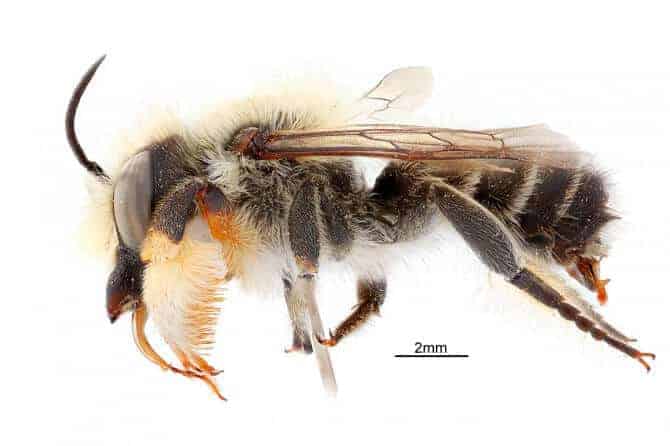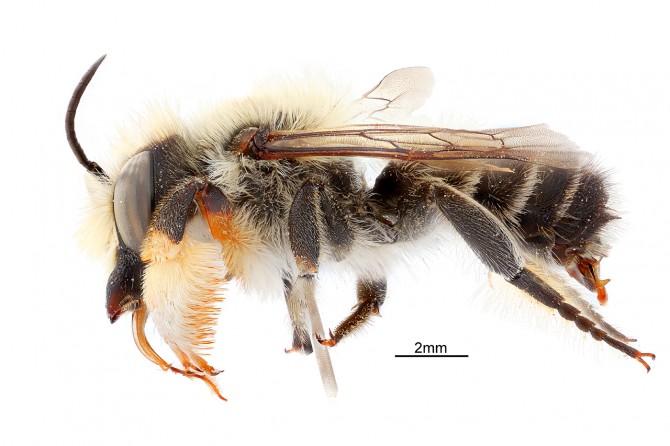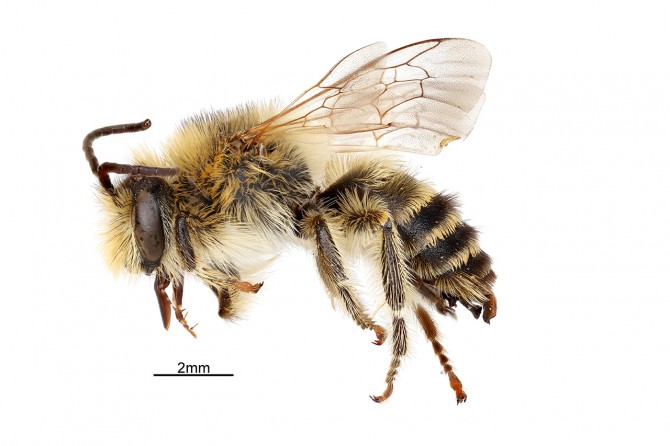A new study rewrites a commonly cited hypothesis about bee evolution and the cause behind an explosion in diversity of bee species some 120 million years ago.
Today, bees are incredibly diverse, accounting for around 20,000 species, with nearly all larvae consuming a diet of flower pollen and nectar.
Researchers have widely believed that bees evolved from carnivorous wasps and that pollen feeding, called pollinivory, allowed bees to rapidly diversify. The idea was that the new food source promoted new species to develop. But no one had tested this hypothesis, until now.
The new study, published Nov. 14 in the journal Proceedings of the Royal Society: Biology Letters, used a recent, existing evolutionary tree of bees and computer models to calculate diversification rates in bees and related wasps. The researchers showed – for the first time – that pollinivory was an important step, but the rapid diversification of bees is better explained by a later development when bees shifted from being specialists narrowly focused on a few host-plant species to generalists that fed on many host plants.
“Broadening of plant diets opened up new and unexploited ecological niches,” said Silas Bossert, a graduate student in the lab of entomology professor Bryan Danforth, and a lead author of the paper along with Elizabeth Murray, a former postdoctoral researcher, also in Danforth’s lab.
“We found that some of the earliest-originating bees did not partake in the diversification upswing,” Murray said. “Our findings indicate that pollen-feeding was an important evolutionary switch, but does not fully explain the diversity we see today. We postulate that other complementary innovations, such as a generalist host-plant diet, influenced the tremendous diversification of the major bee lineages.”
Bees arose from within a group of carnivorous hunting wasps in the mid-Cretaceous period, around the same time that flowering plants began spreading.
The researchers used the most current phylogeny (a branching, tree-like diagram that shows evolutionary relatedness among groups of organisms) that offered a new perspective on the origin of bees. That phylogeny offers evidence that the sister family to bees were small wasps (Ammoplanidae)that hunted thrips, tiny pollen-eating, aphid-like insects.
The current study shows that rates of diversification between carnivorous wasps and the earliest pollen-eating bees (the family Melittidae) match closely, with low species numbers per family (123 species for Ammoplanidae wasps, for example, and 203 Melittidae bee species). At the same time, most melittid bees are highly specialized and feed on a narrow range of host plant flowers.
The bees that appeared after Melittidae in the evolutionary tree are generalists and feed on many host plants; these bee families also show an explosion in rates of diversification, with many more species per family.
Prior to this study, Murray had researched a subfamily of pollen-feeding wasps (Masarinae), whose species numbers are also small (around 350). She then questioned why bees are so diverse compared to pollen wasps. It turns out, pollen-feeding wasps are specialists that feed on just a few host plants.
“The broader conclusion would be that switches in diet don’t necessarily lead to diversification, unless there’s something else that happens, like a broadening of that diet,” said Danforth, the paper’s senior author.
The study was funded by the National Science Foundation.




